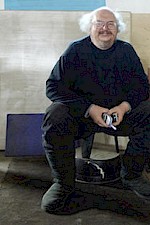What is Room Equalization and is It Necessary?
As we have mentioned before, the room is often the forgotten component in an audio system and it alters the acoustic perception of every other piece of equipment in the system – regardless of the system’s price. Music – live or recorded – heard in an austere room, with bare wood or tile floors, no window coverings and unupholstered furniture will sound quite different than the same piece of music delivered in . And if the size changes, so does the sound.
The difference in sound is caused by effects these different “obstacles” have on sound waves and which get emphasized and which get diminished. The work of balancing these room factors to provide a “flat” response, where all frequencies receive their due importance, is called “room equalization.”
The idea of room equalization is as old as the tone control on AM radios. The bass and treble get adjusted to achieve a balance and sound that is pleasurable to the listener. As audio equipment became more sophisticated, so, too, did tone controls: separate controls for treble and bass, some amps or pre-amps providing treble and bass controls so that the left and right channels could be adjusted independently, parametric equalizers allow adjustments to be made around key frequency points and ranges.
More recently, very sophisticated room equalization devices have come to the consumer market. Audyssey is probably the best known. Others include MCACC and DCAC. Home theater receivers often now include one system or another if only to show the potential buyer more features.
There is no question that room equalization can improve the sound of a system, but there are a few caveats that go with it:
- It is easiest to optimize for one listening position; but this often makes things worse in other locations. Review all likely positions to be certain the changes are improvements everywhere.
- Narrow-band (less than an octave) equalization should only be done in the bass range where the room nodes are over wide locations.
- Cuts of 6 dB are not uncommon when standing waves ‘pile up’ to make peaks that cause a perceived emphasis on particular notes.
- Never try to fill a dip in the response by more than 3db. Most dips are caused by cancellations and increasing the input only increases the cancellation.
- Wide band (more than an octave) of modest changes (1db) can be audible and change the balance of the system; so, make only modest wide band corrections.
- You can generally live with a 6 dB boost at the extremes of the frequency ranges to extend the response by up to half an octave if you do not push your amplifier into clipping or your woofer into distortion.
- When your room equalization also does timing corrections, double check all locations. You may be much better off moving speakers than relying on timing compensation. See my blog on subwoofer placement. (http://www.ohmspeaker.com/news/subwoofer-placement-no-you-can-t-put-it-anywhere/)
So, when you’re setting up or upgrading your audio system, remember that the room is also a component with a particular acoustic character. You may not want to go “whole hog” into room equalization, but there are steps between letting the room dictate your sound and the ultimate in room compensation.
Enjoy & Good Listening!
John
Subscribe to Ohm News & Views to get the latest posts in your inbox
John Strohbeen Author
John Strohbeen was the President and Chief Engineer of Ohm Acoustics from 1978-2023.


